The Future of Inkjet Printers
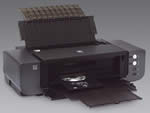 Jon Canfield takes a look back at PMA 2008 to see into the future of inkjet printers…
Jon Canfield takes a look back at PMA 2008 to see into the future of inkjet printers…
PMA 2008 is not going to go down in history as the year of the new printer. Unlike past years where every major company had multiple new product announcements, this year was relatively quite on the inkjet front. That does point to a maturing category, and one where the existing quality bar is already very high. Indeed, you could take any of the top three (Canon, Epson, HP) and have lab quality or better prints today at a very reasonable cost.
That doesn’t mean new product development is dead by any means, and that’s a good thing for us as users. It does mean the breakneck speed of even two years ago is probably over. And, if you’re a gear junky like I am, it also means that we can focus on getting great prints rather than what’s new and better that’s just around the corner.
Canon
With the Pixma Pro 9000 dye ink printer doing very well, and the Pixma Pro 9500 pigment ink model finally shipping in quantity, Canon has two very strong offerings available today in the 13x19 format, which seems to be the new sweet spot for digital photographers.
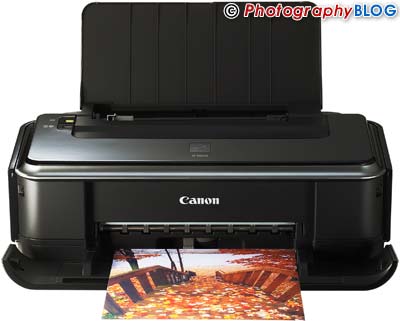
Canon did show a new entry level printer targeted at the casual user. The Pixma iP2600 Photo Printer brings high quality printing into a small package. It uses the same FINE print head technology as Canon’s other photo printers for 4800x1200 dpi resolution, and Canon ChromaLife 100 dye inks like those found in the Pixma Pro 9000. As expected for an entry level printer, the inks are contained in a tricolor cartridge plus a dedicated pigment black for text printing. What sets the iP2600 apart from other printers in this class is the new Auto Image Fix feature which analyzes scenes into categories like portrait and scenery and then optimizes the print for this content. Cost for the Pixma iP2600 is $49.99
Epson
Not new to PMA, but the latest in Epson’s photo printing line-up, and finally shipping in the US is the Stylus Photo R1900. This is a solid update to the very popular R1800. A 13x19 printer that can also do panoramic prints up to 44”, the $549.99 R1900 uses a new UltraChrome Hi-Gloss 2 ink set that has been substantially changed from the previous model. Both Magenta and Yellow have been reformulated for better color gamut in the blue and green ranges, and Orange ink has been added, replacing the Blue ink, and Red has been updated to improve reds and skin tones. Finally, the gloss optimizer, a separate ink cartridge, has been modified to give a higher density coating.
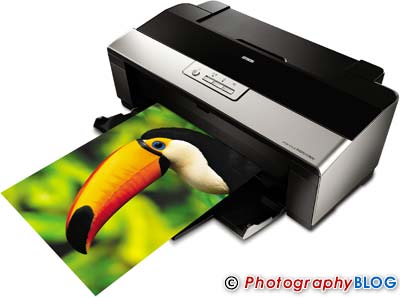
One of the problems that inkjets have faced is an unwanted color shift when going from one light source to another. Epson thinks they’ve found the solution with their new Radiance technology. While I haven’t had the chance to work with it under my own studio settings, the sample prints I reviewed do so a marked improvement in both color consistency, and in smoother tonal gradations and reduced appearance of grain. Particularly in skin tones, this is a very welcome enhancement. Epson has also reworked the print heads to improve reliability and print quality. With resolutions up to 5760x1440 dpi, the printer uses an internal sensor for automatic alignment and nozzle cleaning, along with a system to keep ink overspray from building up in the printer.
HP
The newest printer shown at PMA belonged to HP. Although it was announced a few weeks earlier, the new Photosmart B8850 made its major debut here at PMA. You can read a full product review here on PhotographyBLOG. The B8850 takes the very successful Photosmart Pro B9180 printer, removes or modifies a few features, and drops the price by an impressive $150. With a $549 retail price, the B8850 gives you the same Vivera pigment ink set and printheads as the B9180. Print quality is identical between the two models. You give up an Ethernet port and LCD display on the printer, options that HP claims are more suited to using the printer in a networked environment, and the media support is reduced to a maximum thickness of .7mm rather than 1.5mm. Still thick enough to print on all the normal materials, including fine art photo rag papers.
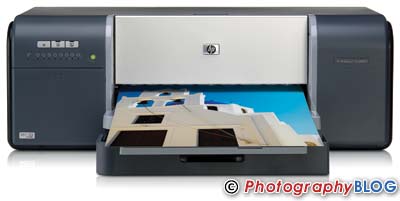
In the compact size market, HP brought out the Photosmart A826 Home Photo Center. This printer blurs the line between computer and printer with a very useable 7” LCD touch screen display. Built-in functions include red-eye removal, a “skinny” feature to slim down your subjects (if only it was that easy in real life!), captions and descriptions – even writing directly LCD with your finger or stylus before printing, and a number of frames, graphics and other embellishments for your images. The printer uses a tricolor ink cartridge and lists for $199.
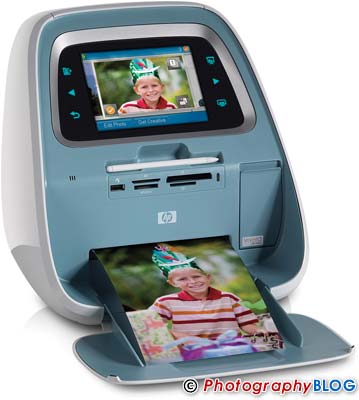
HP also introduced a new application that allows you to simulate the light fading of different paper and ink combinations. It only runs on Windows based systems, but it’s a free download at www.hp.com/go/printpermanence . The program allows you to load a JPG image of your choice and then see how it will fade over a period of up to 80 years. If you use an HP printer and you’ve been considering third party ink refills, this might have you changing your mind. At any rate, it’s fun to play with.
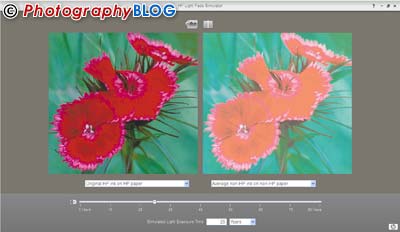
Other Printers
Although the main interest for most digital photographers is inkjet, I’d be remiss to not mention dye-sub printing. Super compact printers from Sony, Olympus, Canon, and others are available that do a very nice job printing snap shots on the go. These units can all be run by battery if you wish, making them a great travel item. For me, they work well as a way to break the ice when traveling and shooting the local life – I can offer the subject a free print on the spot which usually brings a big smile and a few more poses.
For heavier workloads, many event photographers turn to units from Mitsubishi and Sony. These dye-sub printers excel at printing 4x6 or 5x7 images. The Sony SnapLab takes that photo kiosk style printer you’ve probably seen in the stores and shrinks it down to a size and price that make it possible to provide onsite prints. It can be used stand-alone, or connected to a PC.
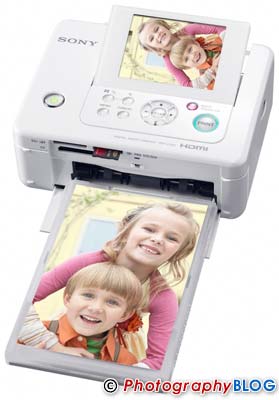

Loading comments…